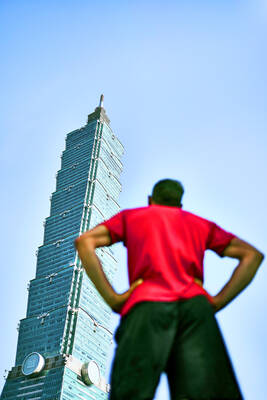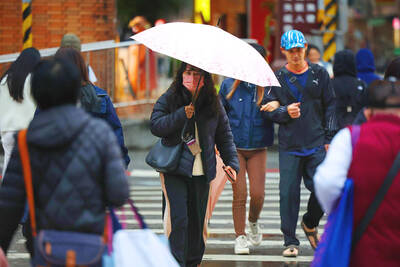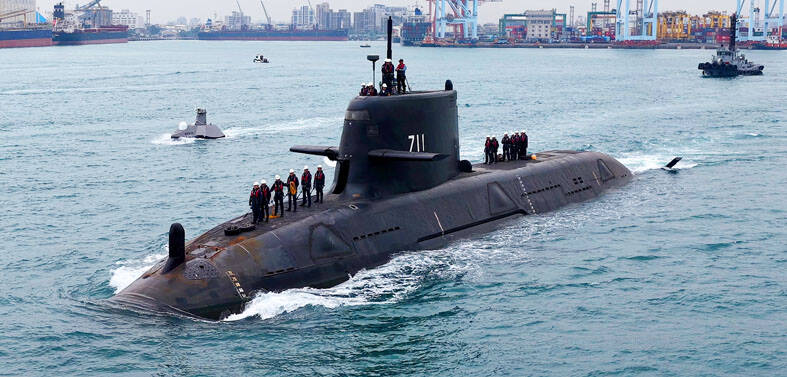Cross-strait politics entered the world of science recently after a Chinese neurobiologist insisted that Taiwanese co-authors identify their university as being located in “Taiwan, China.”
News of the spat were first reported by ScienceInsider, a blog of the Science journal, on Friday, which said that cross-strait cooperation on scientific research had accelerated in the past decade. Usually, collaborators from both sides stayed clear of politics by avoiding references to “Republic of China” and “People’s Republic of China” and simply using “Taiwan” and China” respectively, it said.
However, the growing sense of nationalism in China appears to have entered the lab, with neurobiologist Rao Yi (饒毅) of Peking University insisting that a Taiwanese team led by neurobiologist Chiang Ann-shyn (江安世) of National Tsing Hua University (NTHU) in Hsinchu, which collaborated with Rao’s group on research, identify the university as being located in “Taiwan, China.”
Following back-and-forth visits and “exchanges of ideas,” one of Chiang’s students assisted Rao’s research team with scientific experiments seeking to understand the role of octopamine, a biomolecule, in the brain of Drosophila, a genus of small flies commonly known as “fruit flies.”
Rao drafted a paper on the findings and included Chiang and the student as co-authors. However, references to NTHU located it in “Taiwan, China.”
“It was unexpected,” Chiang is quoted as saying in the story, adding that projects funded by the National Science Council give scientists the right to state their address as “Taiwan” or “Taiwan, Republic of China.”
Rao, ScienceInsider said, also requested that the Taiwanese scientific community endorse such designation for universities in Taiwan.
In a letter to National Science Council Minister Lee Lou-chuang (李羅權) last week, in which the editor-in-chief of Science magazine was copied, Rao said a reasonable compromise was for the two sides to drop the “PR” and the “RO,” while retaining the word “China.” He said his group was willing to drop the PRC designation from its address and simply use “Beijing, China,” adding that Taiwan should reciprocate.
In a follow-up e-mail to ScienceInsider, Rao explained the rationale behind his decision.
“On the mainland [sic] side, the major concern is about Taiwan independence. When a paper lists ‘Taipei, Taiwan’ together with ‘Beijing, China,’ it equates Taiwan with China, not as a part of it,” he wrote.
If the council does not change the rule, it would be “extremely difficult for mainland Chinese scientists to co-author papers explicitly or implicitly endorsing a Taiwan that is not a part of China,” he said.
Rao’s contention goes in the face of nearly 15 years of scientific collaboration across the Taiwan Strait, which started with joint efforts between Academia Sinica’s Institute of Physics and the Chinese Academy of Sciences’ Institute of High Energy Physics.
“We have been using the ‘Taipei, Taiwan’ and ‘Beijing, China’ affiliation format in our publications since the birth of the [collaboration] in 1997,” says Henry Wong, who handles collaboration on Taiwan’s side, was quoted as saying.
According to National Science Council Deputy Minister Chen Cheng-hong (陳正宏), the number of papers with co-authors from Taiwan and China grew from 1,035 in 2009 to 1,207 last year.
For his part, Chiang took the incident in stride.
“Personally, I believe that China and Taiwan are heading [in] a friendly direction. With more patience, I hope we can all contribute to promoting scientific collaboration between the two sides,” he said.

US climber Alex Honnold is to attempt to scale Taipei 101 without a rope and harness in a live Netflix special on Jan. 24, the streaming platform announced on Wednesday. Accounting for the time difference, the two-hour broadcast of Honnold’s climb, called Skyscraper Live, is to air on Jan. 23 in the US, Netflix said in a statement. Honnold, 40, was the first person ever to free solo climb the 900m El Capitan rock formation in Yosemite National Park — a feat that was recorded and later made into the 2018 documentary film Free Solo. Netflix previewed Skyscraper Live in October, after videos

NUMBERS IMBALANCE: More than 4 million Taiwanese have visited China this year, while only about half a million Chinese have visited here Beijing has yet to respond to Taiwan’s requests for negotiation over matters related to the recovery of cross-strait tourism, the Tourism Administration said yesterday. Taiwan’s tourism authority issued the statement after Chinese-language daily the China Times reported yesterday that the government’s policy of banning group tours to China does not stop Taiwanese from visiting the country. As of October, more than 4.2 million had traveled to China this year, exceeding last year. Beijing estimated the number of Taiwanese tourists in China could reach 4.5 million this year. By contrast, only 500,000 Chinese tourists are expected in Taiwan, the report said. The report

Temperatures are forecast to drop steadily as a continental cold air mass moves across Taiwan, with some areas also likely to see heavy rainfall, the Central Weather Administration (CWA) said. From today through early tomorrow, a cold air mass would keep temperatures low across central and northern Taiwan, and the eastern half of Taiwan proper, with isolated brief showers forecast along Keelung’s north coast, Taipei and New Taipei City’s mountainous areas and eastern Taiwan, it said. Lows of 11°C to 15°C are forecast in central and northern Taiwan, Yilan County, and the outlying Kinmen and Lienchiang (Matsu) counties, and 14°C to 17°C

STEERING FAILURE: The first boat of its class is experiencing teething issues as it readies for acceptance by the navy, according to a recent story about rudder failure The Hai Kun (海鯤), the nation’s first locally built submarine, allegedly suffered a total failure of stern hydraulic systems during the second round of sea acceptance trials on June 26, and sailors were forced to manually operate the X-rudder to turn the submarine and return to port, news Web site Mirror Daily reported yesterday. The report said that tugboats following the Hai Kun assisted the submarine in avoiding collisions with other ships due to the X-rudder malfunctioning. At the time of the report, the submarine had completed its trials and was scheduled to begin diving and surfacing tests in shallow areas. The X-rudder,